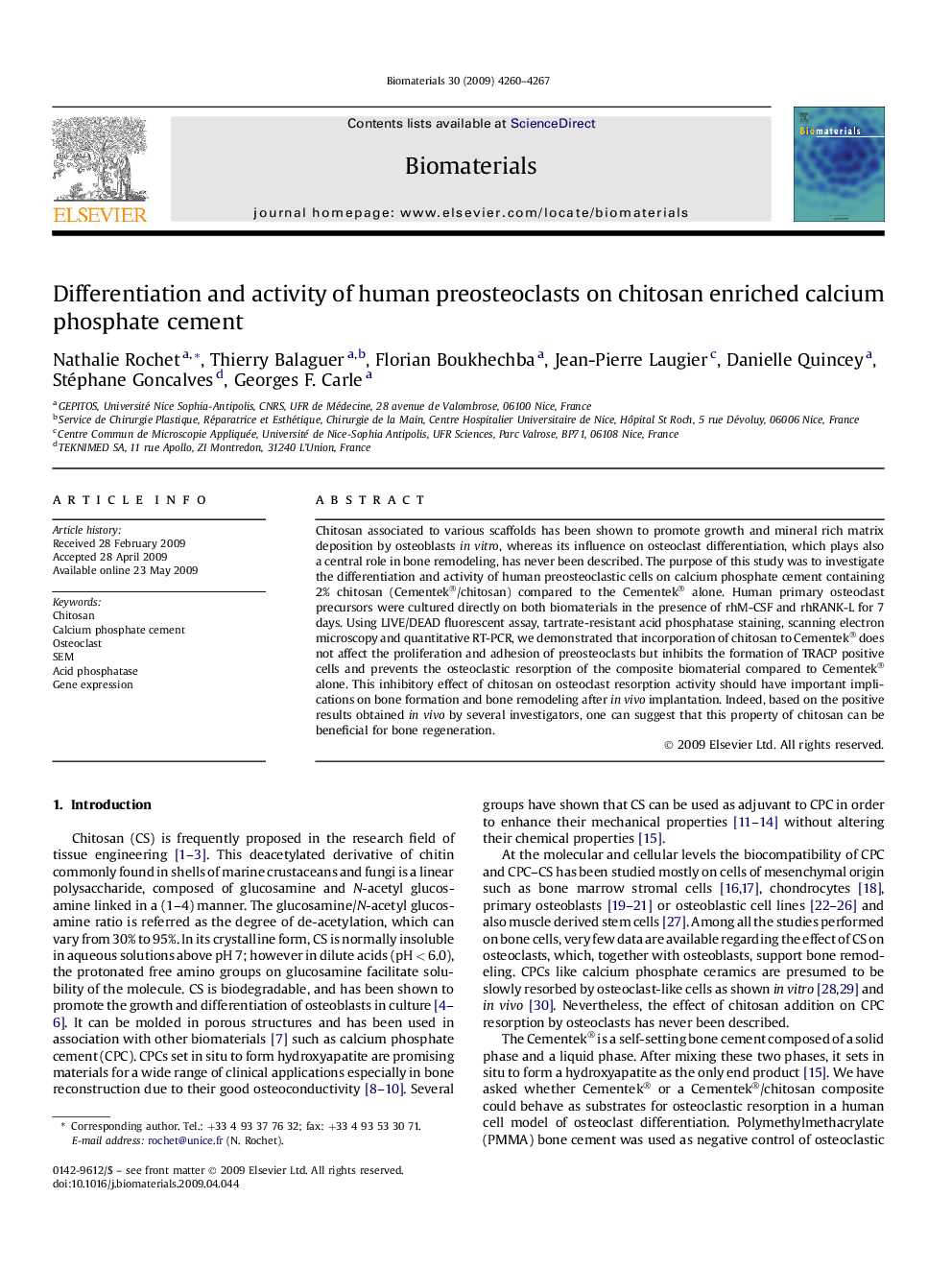| Article ID | Journal | Published Year | Pages | File Type |
|---|---|---|---|---|
| 10230024 | Biomaterials | 2009 | 8 Pages |
Abstract
Chitosan associated to various scaffolds has been shown to promote growth and mineral rich matrix deposition by osteoblasts in vitro, whereas its influence on osteoclast differentiation, which plays also a central role in bone remodeling, has never been described. The purpose of this study was to investigate the differentiation and activity of human preosteoclastic cells on calcium phosphate cement containing 2% chitosan (Cementek®/chitosan) compared to the Cementek® alone. Human primary osteoclast precursors were cultured directly on both biomaterials in the presence of rhM-CSF and rhRANK-L for 7 days. Using LIVE/DEAD fluorescent assay, tartrate-resistant acid phosphatase staining, scanning electron microscopy and quantitative RT-PCR, we demonstrated that incorporation of chitosan to Cementek® does not affect the proliferation and adhesion of preosteoclasts but inhibits the formation of TRACP positive cells and prevents the osteoclastic resorption of the composite biomaterial compared to Cementek® alone. This inhibitory effect of chitosan on osteoclast resorption activity should have important implications on bone formation and bone remodeling after in vivo implantation. Indeed, based on the positive results obtained in vivo by several investigators, one can suggest that this property of chitosan can be beneficial for bone regeneration.
Related Topics
Physical Sciences and Engineering
Chemical Engineering
Bioengineering
Authors
Nathalie Rochet, Thierry Balaguer, Florian Boukhechba, Jean-Pierre Laugier, Danielle Quincey, Stéphane Goncalves, Georges F. Carle,
